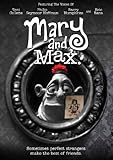From The New York Times: Once a ‘Cuckoo’s Nest,’ Now a Museum
March 31, 2013
Once a ‘Cuckoo’s Nest,’ Now a Museum
By KIRK JOHNSON
SALEM, Ore. — Nurse Ratched slept here.
The punctiliously cruel psychiatric ward tyrant in the book and movie “One Flew Over the Cuckoo’s Nest” was brought to cinematic life by the actress Louise Fletcher during filming here at the Oregon State Hospital in the 1970s.
But the melding of real life and art went far beyond the film set. Take the character of John Spivey, a doctor who ministers to Jack Nicholson’s doomed insurrectionist character, Randle McMurphy. Dr. Spivey was played by Dr. Dean Brooks, the real hospital’s superintendent at the time.
Dr. Brooks read for the role, he said, and threw the script to the floor, calling it unrealistic — a tirade that apparently impressed the director, Milos Forman. Mr. Forman ultimately offered him the part, Dr. Brooks said, and told the doctor-turned-actor to rewrite his lines to make them medically correct. Other hospital staff members and patients had walk-on roles.
Now jump cut to the present: the office and treatment rooms of the hospital, which opened in 1883, have been turned into a Museum of Mental Health — one of only a few around the world that are part of a still-functioning hospital, which sprawls behind the old brick structure.
In the museum, a steel examination table sits near a photograph of the Oregon State Insane Asylum baseball team, which once played against local challengers in and around Salem, Oregon’s capital. A straitjacket and a spilled bag of handcuffs fill another display, with a notation from the night watch book recorded at 2 a.m. on Feb. 25, 1913. “Mrs. Bernard would not remain in bed,” an attendant wrote. “Restrained her with jacket and belt.”
The juxtaposition of real and celluloid, truth and fiction, that emerged on the “Cuckoo’s Nest” set continues. A photograph of Ms. Fletcher’s character, steely smile and nurse’s cap in place, adorns a wall near a television that blares the movie itself on a continuous loop showing the movie’s patients watching that very television, which was retrieved from a hospital trash bin and saved after the filming ended.
The result — physical evidence of the hospital’s past alongside the Hollywood portrait — creates questions that McMurphy and his cohorts might have asked. What is real and what merely seems real? Was the hospital, which had a large number of voluntary admissions in its early years, a place of sanctuary, an old definition of the word “asylum,” or of confinement? Darkness and dread, or escape?
Dr. Brooks, now 96, and living near the hospital in a retirement home, minces no words when he says that mental health treatment in years past had its flaws. But anyone looking back, he said in an interview, should also look hard at the present. Institutions like the Oregon State Hospital, which he supervised for nearly 30 years — from the mid-1950s to the early ’80s — might not have been perfect, he said, but they were at least out there and trying to help. Today, he said, prisons have taken over the job, with barely a pretense of treatment. “Three-fourths of all mentally ill people are in jails or penitentiaries,” he said.
But the new museum raises questions about what the hospitals themselves were created to do, and how many patients were actually mentally ill by modern definitions.
In its early days, the museum’s records suggest, there was no pattern to admissions at all. Alcoholics, dementia patients, syphilis sufferers and others given the catchall diagnosis of “mania” were all taken in. And for part of its history, in the early 20th century, a majority of patients were women, at least a few of whom would occasionally leave for visits with their families. That suggests, museum volunteers said, that domestic trouble or abuse, in a time before easy divorce and when officers spent little time on marital violence cases, may have created a sense of safety for women behind the hospital walls that has since been forgotten in the wave of harsh imagery in films and books like “Cuckoo’s Nest,” which was written by Ken Kesey and published in 1962.
The old model of an “insane asylum” coincided with an era that revered the value of work. Patients were expected to sew or cook or grow the food they ate — not just to make the place self-sufficient, which it mostly was, but because work itself was considered elevating and therapeutic. Patients even made their own leather restraints, said Kathryn Dysart, a museum volunteer.
In the new hospital, music and art therapy areas line a corridor that includes rooms where patients can practice skills they will need when they are released, like handling money. One was created to look like a bank and allows patients to withdraw funds that their families have deposited — money that can then be used to buy clothes at a room made to look like a store.
“As real as possible,” said Rebeka Gipson-King, a spokeswoman for the Oregon State Hospital, in describing the mimicry, which she said was aimed at making the outside world less alien after a patient’s discharge.
Other preconceptions about the outside world do not hold up so well. Ms. Fletcher, who won an Oscar for her portrayal of Nurse Ratched — the film won five Oscars, including Best Picture, in 1976 — came to the Mental Health Museum’s opening last fall, and turned out to be, in reality, very nice.
“Charming lady,” said Hazel Patton, the president of the museum’s board of directors.

